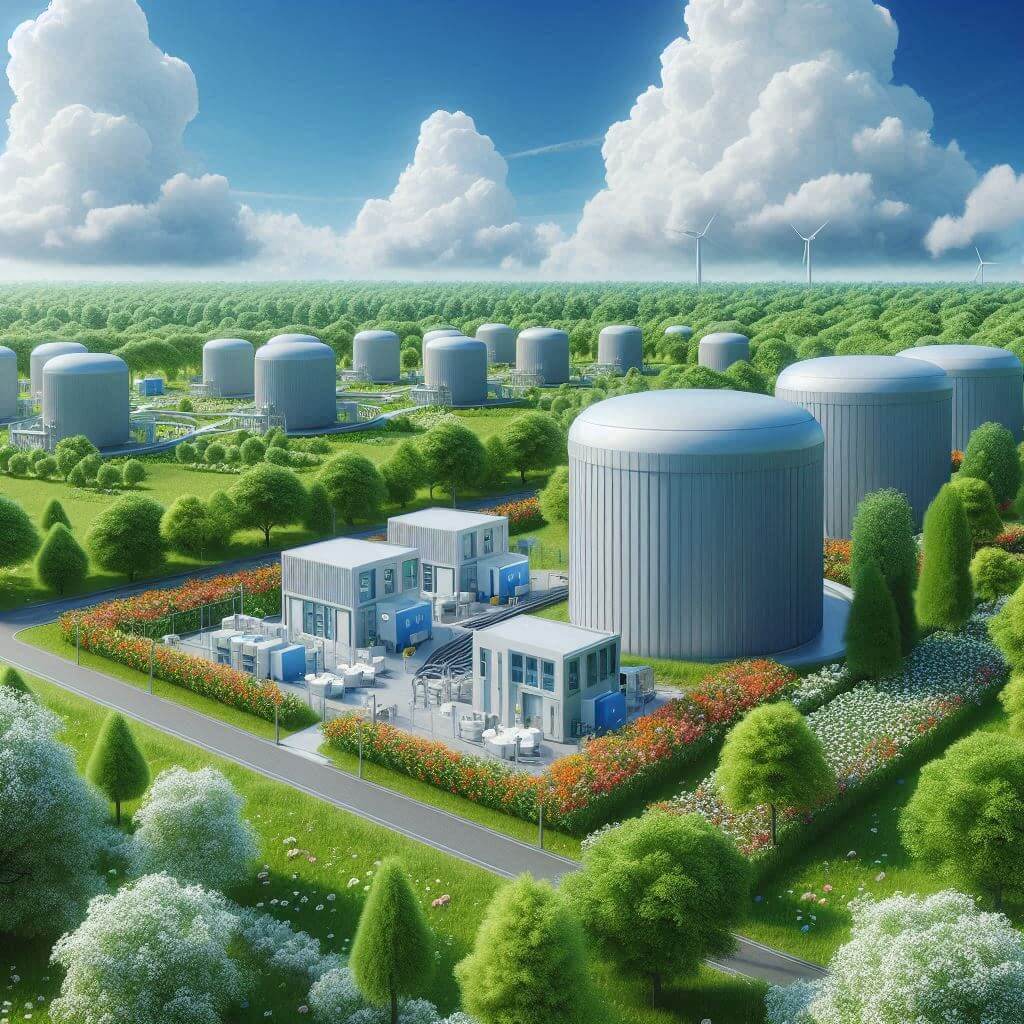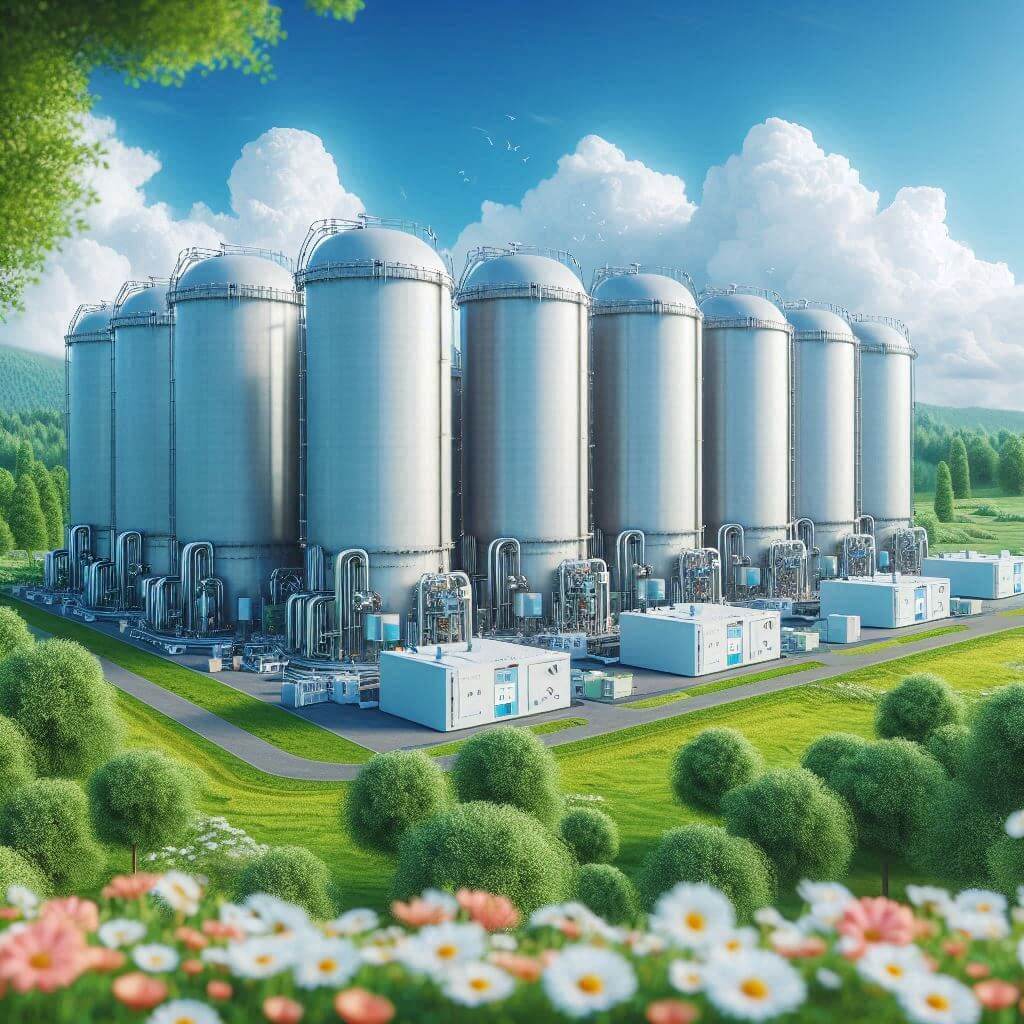Small Modular Reactors (SMRs) are a new generation of nuclear reactors characterized by smaller dimensions and modular design. Conventional nuclear reactors have large power outputs, often exceeding 1,000 megawatts of electricity (MW), requiring significant infrastructure and investment. In contrast, SMRs typically generate between 50 and 300 MW. This smaller capacity allows them to be built in factories and transported to installation sites, allowing for faster and more economical construction. The modular nature of SMR facilitates scalability; additional units can be added incrementally to meet growing demand, matching it with the needs of the power system.
One of the defining features of SMRs is their advanced safety systems. Many designs include passive safety features, meaning they rely on natural physical principles such as gravity and convection, rather than complex mechanical or human intervention, to ensure safe operation in the event of a breach. For example, in the event of a malfunction, these systems automatically shut down the reactor without human intervention, reducing the risk of accidents. Enhanced security measures also include robust containment strategies and the use of low-enriched uranium fuel, further reducing proliferation risks.
The compact design of SMRs makes them suitable for deployment in a variety of locations, including remote or underdeveloped areas. Unlike large conventional reactors that require extensive grid infrastructure, SMRs can provide power to isolated regions or small communities with limited access to electricity. The ability to install SMRs on industrial sites, in mining facilities, or in conjunction with renewable energy installations opens up opportunities for distributed energy production, increasing energy security and sustainability.
 Several countries are actively developing SMR technologies with various projects in various stages of approval and construction. Designs can vary, including water-cooled reactors, gas-cooled reactors, and fast reactors, each offering unique advantages. This diversity allows for the development of individual solutions based on specific geographic, economic, and energy needs. As SMRs undergo rigorous testing and regulatory processes, they are becoming a reliable choice among energy sources, promising reliable, flexible, and safe nuclear power generation.
Several countries are actively developing SMR technologies with various projects in various stages of approval and construction. Designs can vary, including water-cooled reactors, gas-cooled reactors, and fast reactors, each offering unique advantages. This diversity allows for the development of individual solutions based on specific geographic, economic, and energy needs. As SMRs undergo rigorous testing and regulatory processes, they are becoming a reliable choice among energy sources, promising reliable, flexible, and safe nuclear power generation.
Advantages Of SMR In The Energy Transition
Small modular reactors (SMRs) offer several specific advantages in the context of the transition to a sustainable energy system. One significant advantage is their potential for lower initial capital costs compared to conventional nuclear power plants. Traditional plants often require billions of dollars in investment, which can be a financial barrier, especially in developing countries. SMR reduces these upfront costs by using standardized manufacturing processes in the factory. This factory production allows for economies of scale and reduced construction time, as most of the assembly can take place off-site in a controlled environment. On-site construction is less complex, which minimizes labor and time.
Reduced construction time is another notable advantage of SMR. Conventional nuclear reactors can take ten years or more to build due to their size and complexity, while SMRs can be installed within three to five years. This shorter timeframe allows for faster deployment, which is critical to meeting urgent climate goals and faster replacement of aging fossil-fueled power plants with clean energy alternatives.
SMRs also exhibit increased adaptability, which is important for integration with renewable energy sources. Renewable energy production, such as wind and solar, is variable and depends on the weather and time of day. SMRs can operate as a stable baseload source, providing a constant supply of electricity when renewables fluctuate. At the same time, thanks to their flexible operating characteristics, SMRs can adjust their capacity according to changes in demand or supplement renewable energy production, maintaining grid stability and reliability.
SMRs are potentially suitable for use in remote or decentralized locations where large-scale nuclear power plants are impractical. These areas, often without reliable power infrastructure, can benefit from the localized generation provided by SMRs. This feature improves energy access and reliability in areas such as isolated communities or remote industries such as mining that require a constant power supply.
Safety and regulatory acceptability are also important positive elements of SMR. Their smaller size and enhanced internal security measures result in potentially reduced evacuation zones and simplified emergency planning. This can facilitate siting and expedite regulatory approval processes, reducing the regulatory burden that often hinders nuclear projects.
Problems Facing SMRs
Despite their promise, small modular reactors (SMRs) face several specific challenges that may affect their implementation and adoption. One of the main obstacles is regulatory approval. Nuclear reactors must meet strict safety and environmental standards before they can be deployed, and new technologies such as SMRs require detailed evaluation to ensure they are safe. The regulatory framework historically focused on larger, conventional reactors may not be well suited to address the unique characteristics and safety characteristics of SMRs. This requires the development and adaptation of regulatory processes, which can be time-consuming and expensive. SMR developers must work closely with regulatory authorities to promote understanding and acceptance of these new technologies.
Another significant challenge is the management of nuclear waste, a longstanding problem of the nuclear industry. Although SMR reactors are designed to produce less waste per unit of energy compared to conventional reactors, they still generate radioactive materials that require safe, long-term disposal solutions. The current practice of waste management involves storage in deep geological repositories, the creation and maintenance of which is expensive and difficult. Improving these solutions and ensuring efficient transport and storage systems are critical as more SMRs come online.
Public perception is another major issue. Despite advances in safety, the legacy of past nuclear accidents affects public perception, and concerns about potential environmental impacts remain widespread. Developers and operators of SMRs must engage in transparent communication with the public and stakeholders, providing clear, evidence-based information on safety, waste management, and environmental protection measures.
Economic problems also create obstacles to the widespread implementation of SMR. Although they offer lower capital costs compared to traditional nuclear plants, the initial costs are still significant. SMRs compete with falling prices for renewable energy technologies such as solar and wind. To be economically viable, they must demonstrate a competitive price advantage over these alternative energy sources. This requires innovation in design, manufacturing, and operational efficiency to reduce costs and improve financial feasibility.
Supply chain readiness poses another challenge. Manufacturing reactor components require special materials and capabilities that are not widely available. Establishing and maintaining a reliable supply chain that can support mass production of SMRs is critical. Any disruptions or shortages in the supply of essential materials could result in delays, and increased costs and could jeopardize SMR’s economic competitiveness.

